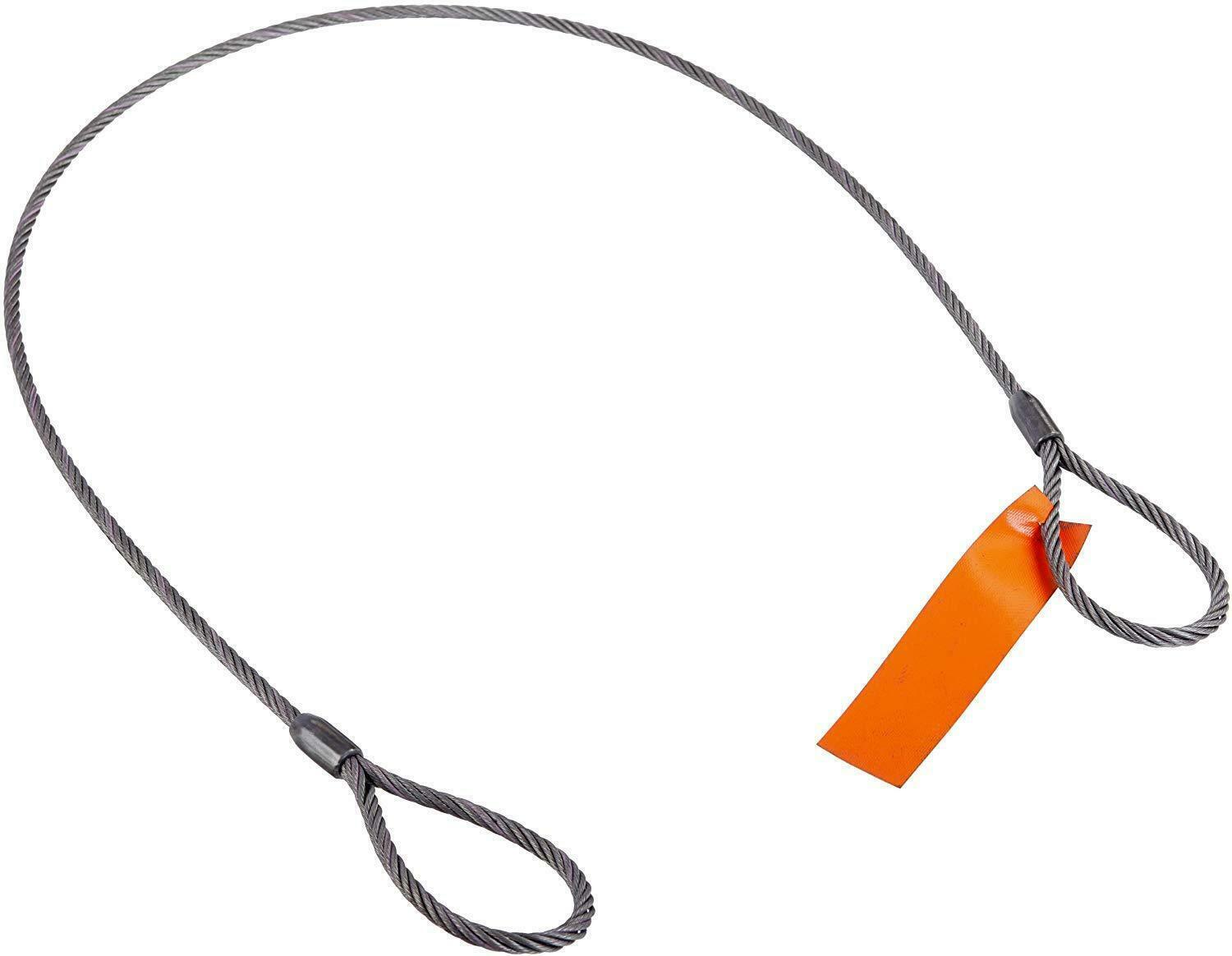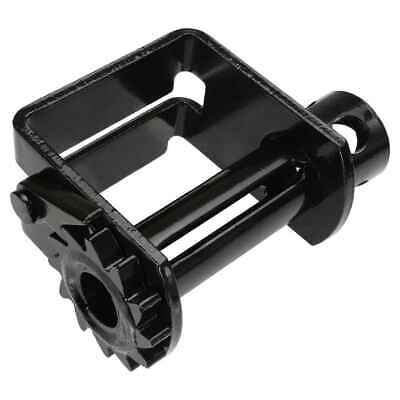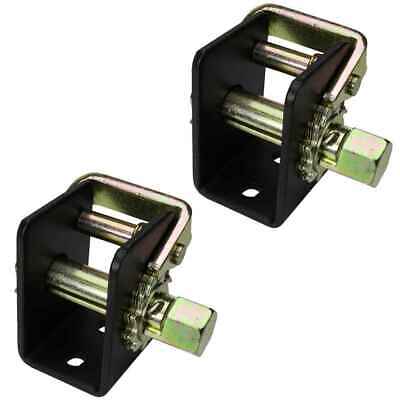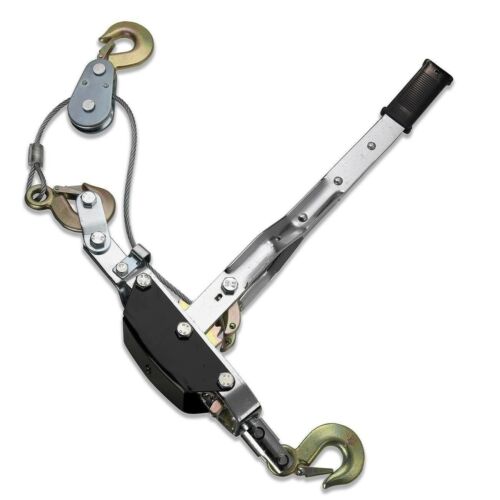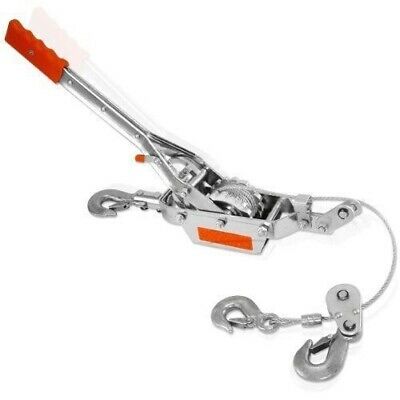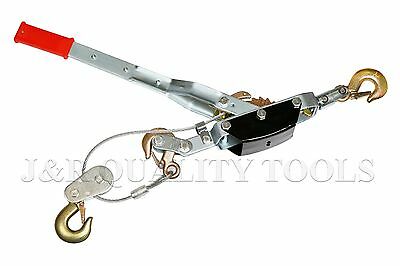-40%
Mazzella Mechanical Splice Wire Rope Sling, Eye-and-Eye, 6 x 25 IWRC, 19' Length
$ 21.11
- Description
- Size Guide
Description
Mazzella Mechanical Splice Wire Rope Sling, Eye-and-Eye, 6 x 25 IWRC, 19' Length, 1/4" Diameter, 4" Eyes, 1300 lbs Vertical Load CapacityWire rope sling for lifting loads in industrial environments
6 x 25 IWRC (independent wire rope core) construction for a balance between abrasion resistance and fatigue resistance
Eye-and-eye endings for vertical, choker, and basket lifting configurations
Mechanical (also called Flemish) splice is stronger than a hand splice
Meets ASME specification B30.9 and OSHA specification 1910.184
Product Specifications
Part Number
9521-90
Load Capacity
1300 pounds
Inside Length
4 inches
Item Diameter
1/4 inches
Length
19 feet
Model Number
6 X 25 IWRC
Number of Items
1
Size
19' Length, 1/4" Diameter, 4" Eyes
Specification for this product family
Brand Name
Mazzella Lifting Technologies
Manufacturer Series Number
Mechanical Splice
Material
Steel
Special Features
Vertical, Choker, Basket
Specification Met
Osha, Asme B30.9
Standard Construction
6 x 25 IWRC
Style
Eye-and-Eye
Upper Temperature Rating
400 degrees_fahrenheit
Product description
Item Diameter String:
1/4 Inches
| Item Length String:
19 Feet
| Number of Items:
1
The Mazzella 6 x25 IWRC (independent wire rope core) single-leg wire rope sling has eye-and-eye endings and a mechanical splice for lifting loads with vertical, choker, or basket configurations in industrial applications. The 6 x 25 IWRC construction contains six strands of wire rope with 25 wires per strand wrapped around a separate 7 X 7 wire rope, which has seven strands with seven wires per strand, in the center of the sling. This construction provides a balance between abrasion resistance and fatigue resistance, or resistance to the weakening that results from too much bending. The wire rope construction is flexible and has more abrasion and heat resistance than a web sling. This eye-and-eye sling has an eye, or loop, on both ends, and can be used with vertical, choker, and basket lifting configurations. The eyes are secured with a mechanical (also called Flemish) splice that is stronger than a hand splice. This sling has a minimum D/d ratio of 25 and meets American Society of Mechanical Engineers (ASME) specification B30.9 and Occupational Safety and Health Administration (OSHA) specification 1910.184.
Slings are used to lift heavy objects for industrial applications. Types of slings include web slings, wire rope slings, chain slings, and mesh slings. The appropriate type of sling for an application depends on the strength-to-weight ratio, flexibility and resistance to bending, resistance to abrasion and cutting, resistance to crushing, resistance to stretching, and resistance to high temperatures and other environmental stressors. Slings have one, two, three, or four legs; or a continuous loop of webbing or wire rope. Legs are support branches that extend from a single point at the top of the sling to the item being lifted so the weight of the load is distributed evenly among the branches. Slings have eyes (loops) or alloy steel fittings on the ends.
A vertical lifting configuration connects a crane hook directly to a load with a single, vertical sling, usually by means of a hook. In a choker configuration, the sling wraps entirely around the load, and one loop passes through the other to form a slip noose, or choker. In a basket configuration, the sling passes under the load and both ends of the sling connect to the crane hook. Load capacity is the maximum weight to be lifted in a vertical configuration. The capacity in a choker configuration is approximately equal to the vertical capacity times 0.8. The capacity in a basket configuration, with sling ends at a 90-degree angle, is approximately equal to twice the vertical capacity. Load capacity in a basket configuration decreases if the angle of the sling is less than 90 degrees. For example, a sling with a capacity of 2,000 lb. in a vertical configuration will have an approximate capacity of (2,000)(0.8)=1,600 lb. in a choker configuration and an approximate capacity of (2,000)(2)=4,000 lb. in a basket configuration, if the sling ends are at a 90-degree angle to the load. A wire rope sling's capacity in a basket configuration applies only when the configuration meets the sling's minimum D/d ratio, which is the ratio of the diameter of the rope's curve around the load (D) to the diameter of the sling (d). If the minimum D/d ratio is not met, the capacity of the sling is decreased.
Mazzella Lifting Technologies manufactures lifting solutions including slings, cranes, and hoists. Founded in 1954, the company is headquartered in Cleveland, OH.
Listing and template services provided by inkFrog
